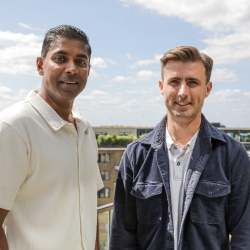Building an efficient and collaborating team is sometimes a tall order. There should be a reason if you see so many leadership, corporate culture and management titles on the bookstore shelves. So, here I come with another “How to” for all my fellow team leaders. Hopefully, you will find the below article to be a valuable source of inspiration for you and your team.
As a leader, I devote most of my time to my team. It’s sometimes hard to set priorities, as they vary day by day. Some of them seem to be set in stone, hence impossible to change. Other times a to-do list of a team leader includes hard-to-define tasks that can’t be left undone. And if you have ever wondered where the so-called ‘loneliness in leadership’ has its core, I guess it’s the overlapping of all the above factors.
Despite this, I managed to build a team of 6 from scratch that work towards a mutual goal. This makes me proud everyday.
A team of 6 that achieved great results, if you want talking about numbers.
Bringing the team to life involved adopting a trial-and-error method. Now, reflecting back on that process, I recognize 8 crucial elements.
Team and individual responsibility
Responsibility is underestimated. To me, there are 2 aspects that must be addressed.
The first one is a team responsibility that — simply said — leads to being aware of why the team even exists.
Every member, from an intern to a senior, must know their role in the team they are assigned to. My team, for example, is a marketing team that brings leads to the company. Every member knows that without leads, there will be no sales. Without sales, there will be no clients, and without clients, there will be no business. And as brutal as it sounds, there will be no team at all. Does my team feel this responsibility? They surely do!
The second aspect is individual responsibility, which is crucial not only from the achieving results perspective but also, and most importantly, from the perspective of self-development of individual team members.
If you’re going to remember something from this article, let it be this sentence: Don’t delegate tasks, delegate responsibilities. You’re right, it is not easy and you will probably mess it up a bit from time to time, but working on this aspect is worth the struggle. Every member needs to know how s/he impacts the team’s outcomes.
And what is the outcome?
One common goal
That’s the outcome. One goal that everyone knows and that is quantified. Let’s take my team as an example again: for them, it’s the number of sales qualified leads (SQLs) that we plan every quarter and, then, every month. This is the main goal but, of course, each one of us has their own ‘smaller’ goals that contribute to achieving the big one (the SQLs).
The common goal also supports team collaboration. There is no room for saying: “It is not in my job” when someone needs help. We do work together, and everyone is aware of how s/he impacts completion of the common goal. To make that clear to every team member, we have quarterly planning sessions.
Joint quarterly planning
We work remotely, but every 3 months we get together at the office to plan out the next projects that will be running to achieve our goal. Brainstorming brings more creative ideas and supports common responsibility to implement the plan. It is important to assign an owner to every project (again, see the first point — Individual responsibility).
Agile workflow
When you think ‘agile’, you probably think IT. But the idea of agility is gaining in popularity in other industries as well because it simply works. I have also decided to implement some of its techniques, of course, after adapting them to our needs.
First of all, we have weekly sprints and we plan individual tasks every week (side note: every member plans his/her tasks individually, taking other projects under consideration). We have also implemented check-ins (Monday) and check-outs (Friday). Those meetings fulfil 2 purposes:
- Team integration — we don’t meet up often in the office. We don’t have many occasions to chat while drinking a coffee, so we let ourselves ‘gossip’ a bit during these meetings. And yes, it is OK if half of the meeting is just about chatting — that is something you may need to manage a well-functioning team
- Follow-up — we catch up on the projects and make sure that we are all on the right track
Safe environment
Safety is a basic human need, also in the workplace. Being afraid of making a mistake limits creativity. Being brave and trying new things increases the chances to succeed.
Let’s be honest, everyone makes mistakes. The most important, however, is how we deal with them and their consequences. If you don’t treat mistakes as a huge problem and you focus on solutions, you do more than just improve the results. You also encourage your team to give feedback to others and you teach them that it is OK to get feedback as well.
Fair reward system
There are two types of rewards — intangible and tangible, both being equally vital. Praise is the easiest and maybe the most important intangible reward. The need to be appreciated is in each of us and sometimes a simple “good job” makes someone’s day. Don’t forget about it.
But we all know that the “good job” doesn’t pay the bills, so here comes the tangible reward idea. We do have monthly bonuses that are based on individual performance. Quarterly team bonus, however, is given to all team members upon common goal achievement completion.
Leader as a team member
I have got a confession. As mentioned before, I have a team of 6. 6 including me. And I said that on purpose.
I consider myself a card-carrying member of this team. Therefore, if there is someone to cover for, or an urgent task to be done, I simply jump right in and do what I am suppose to do. I don’t have every single skill my team members have so I can’t substitute for everyone and for everything. They are way better in many aspects than I am, and it is really OK to admit that.
Nevertheless, it is also important to remember that for team members a leader is a boss. That’s why there will always be some kind of an invisible barrier between us. However, I believe that you can be a good friend and a fair leader at the same time. Common respect shouldn’t come with a title.
People
Last but definitely not least, in my personal hierarchy, this factor is a prime one, but I left it here on purpose. Knowing all the previous aspects, you might imagine what kind of people you need in your team and what kind of people I work with.
- They are very flexible and ready to join any project we open.
- They are creative and ready to think of more solutions that will bring us closer to our goal.
- They support each other and collaborate because they have one goal to achieve.
- They are open to receive and give feedback because they know this is the way they learn.
- They take responsibility and are very independent.
- They aren’t afraid to ask questions.
Featured image: Josh Calabrese / Unsplash




























